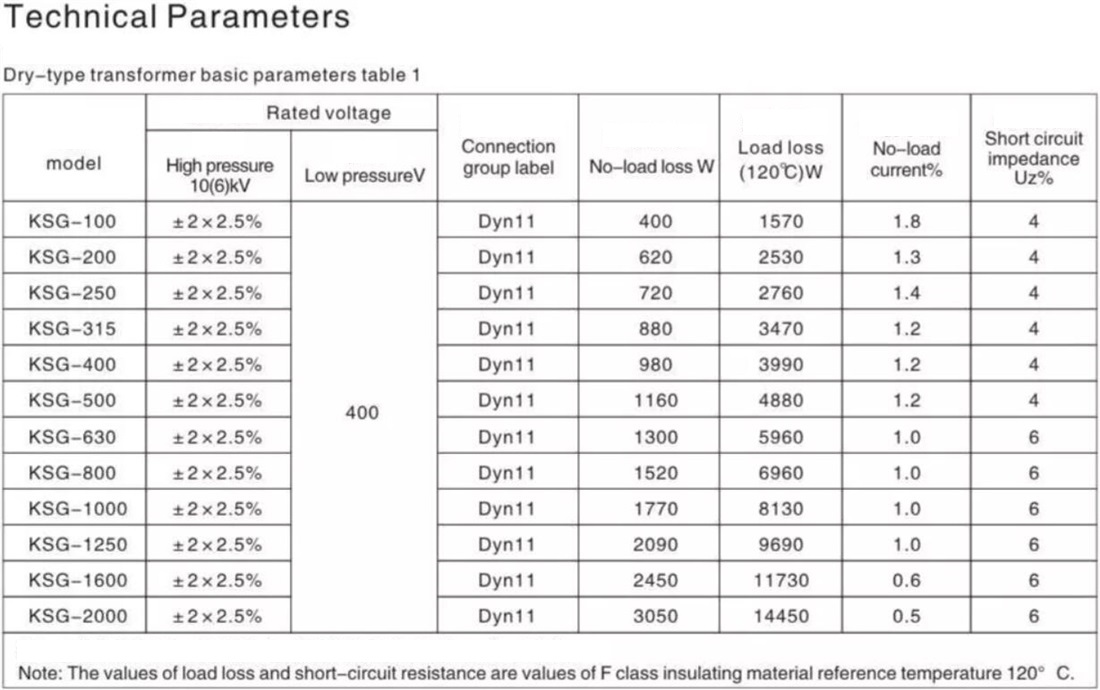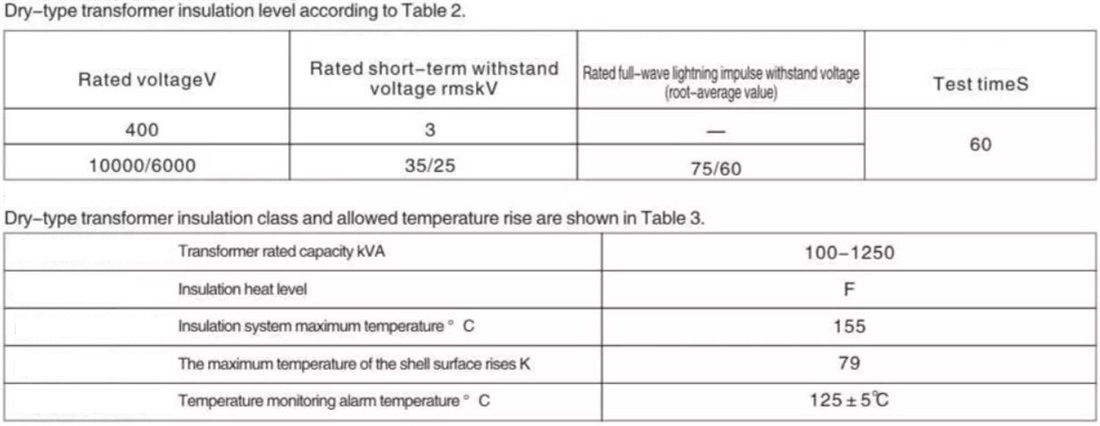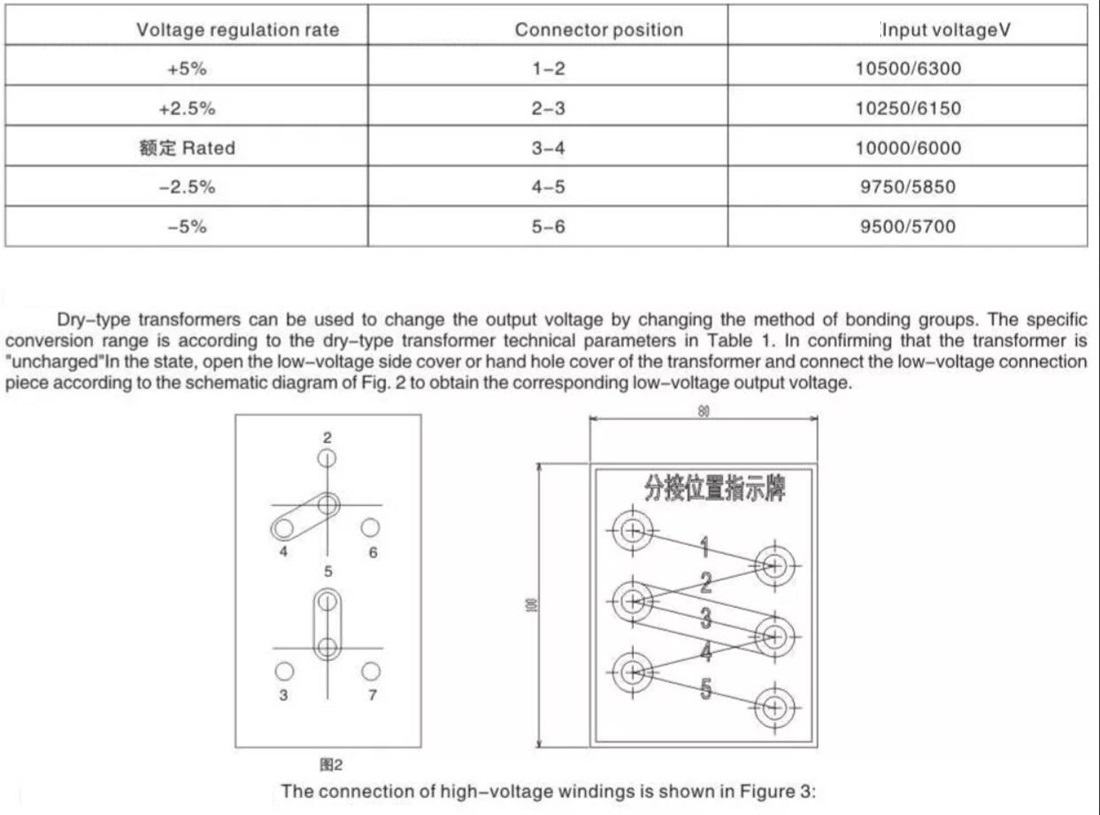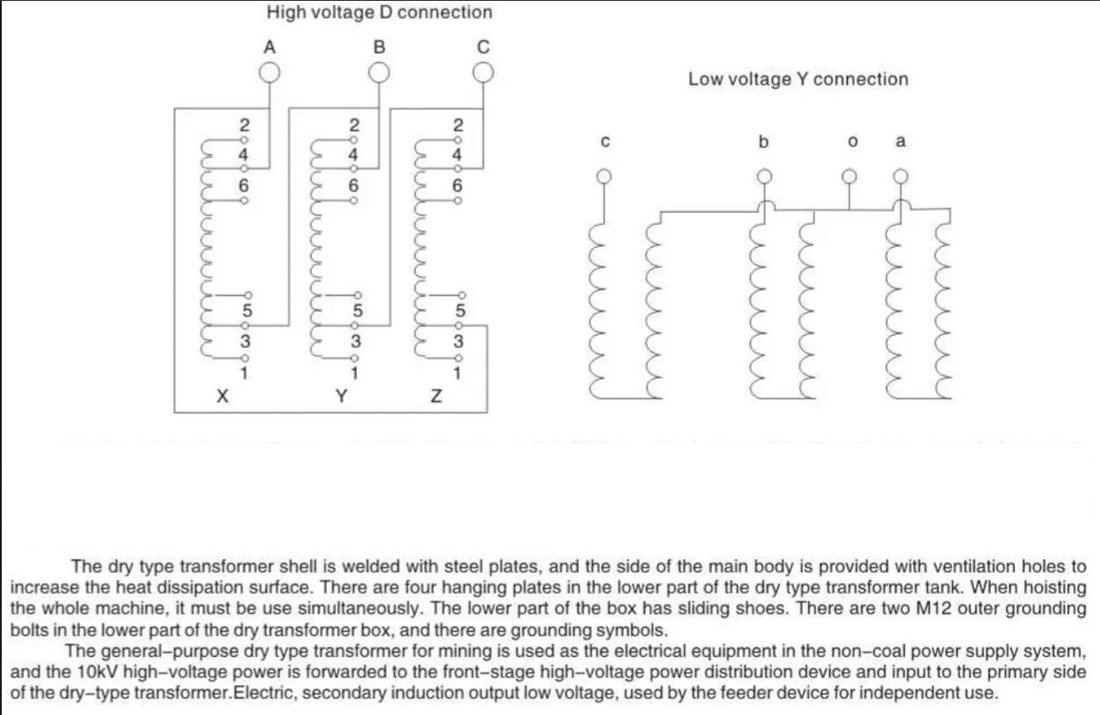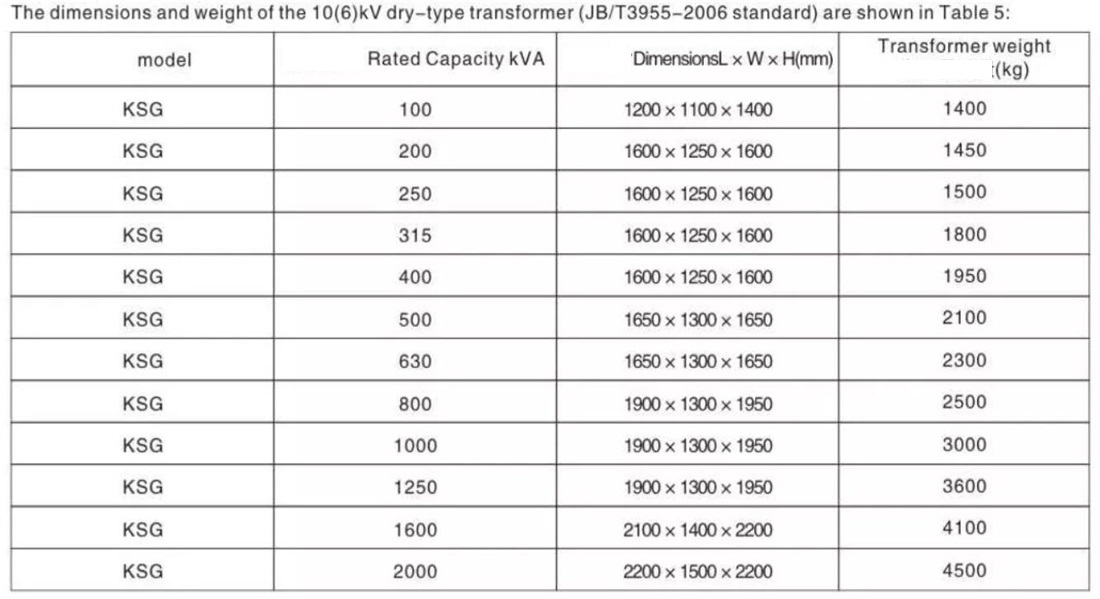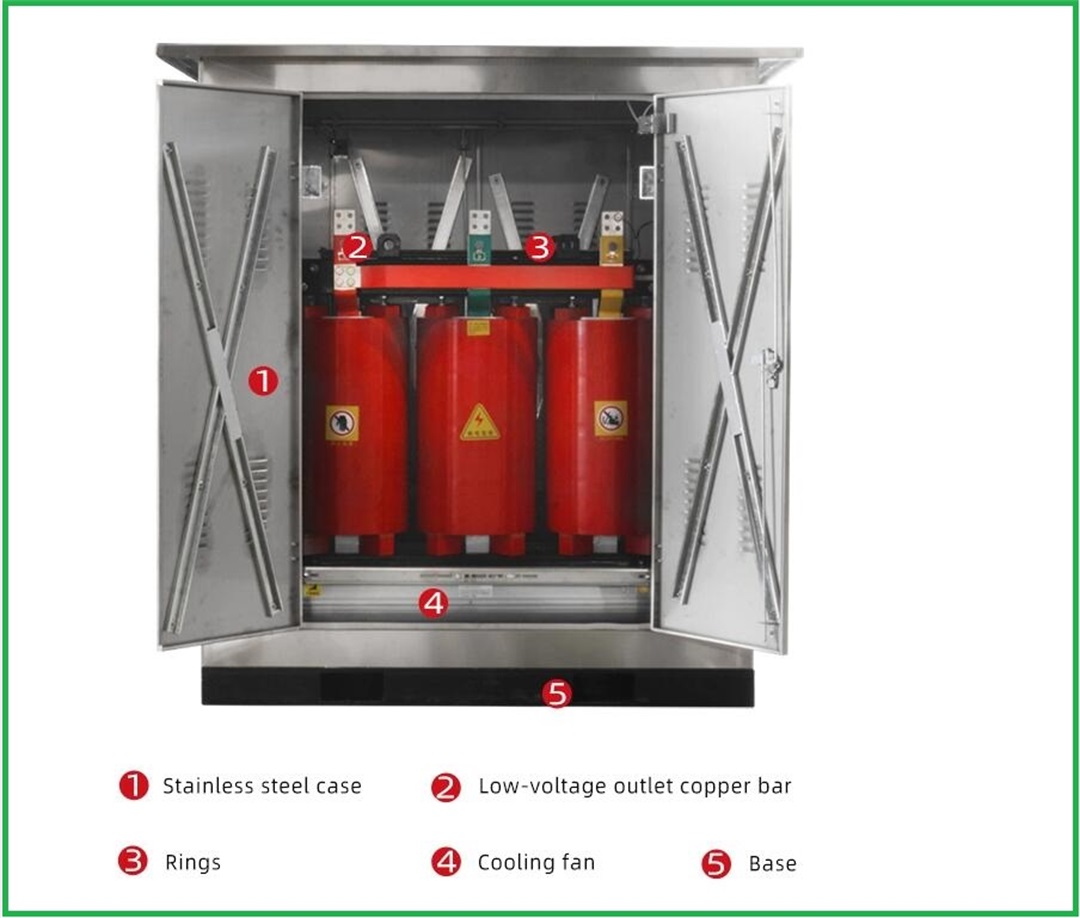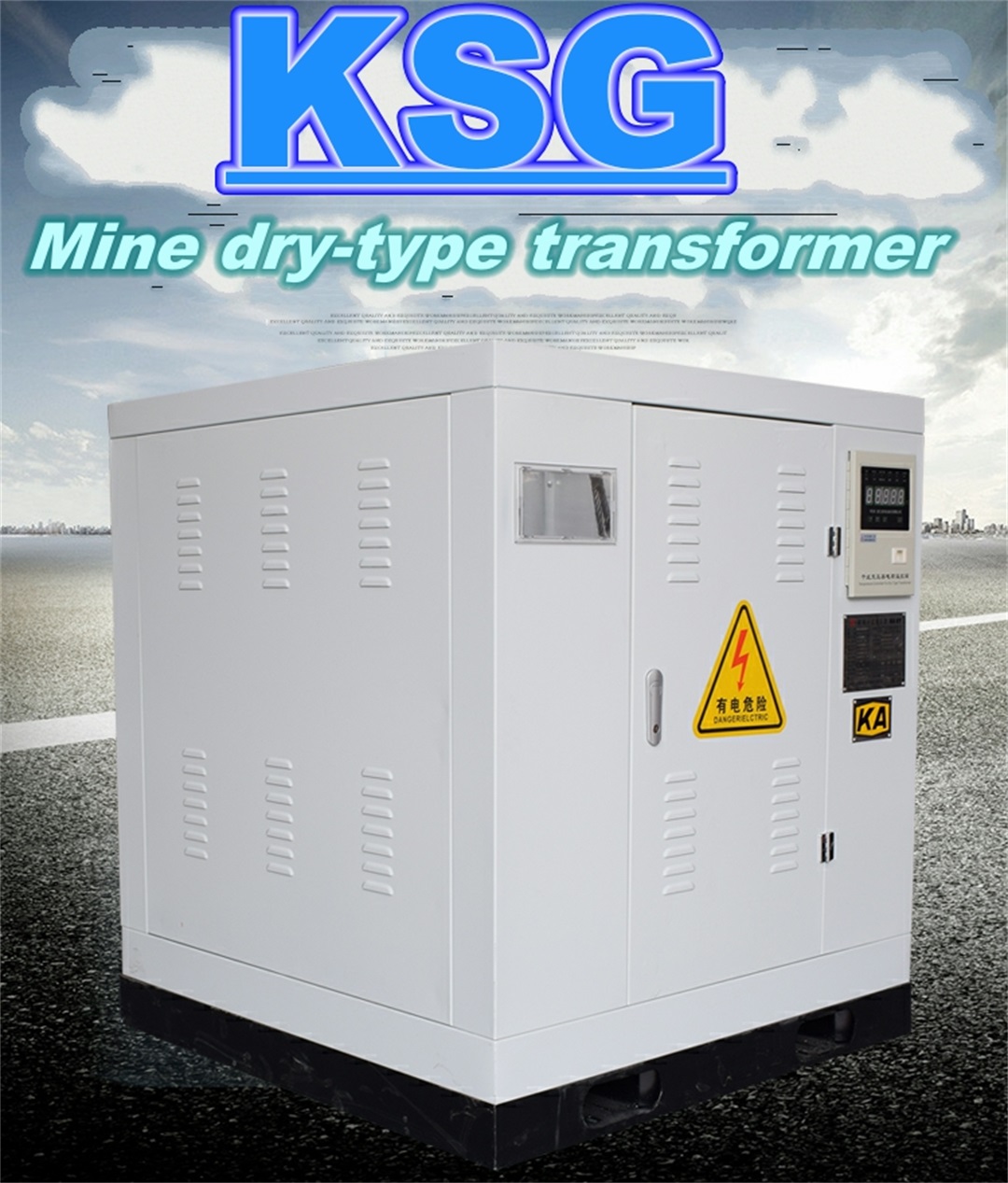KSG 6-10KV 50-1600KVA 400-1200V common type mine dry-type transformer
Product Description
KSG series mine dry-type transformers are suitable for central substations, underground yards, general air inlets and main air inlets in coal mines. Metal and non-metal mines that have gas but no explosion hazard are used to supply power to various equipment in mines and underground mines, and are also used to power public railway tunnels.
KSG series mining dry-type transformers are dry-type transformers with IP20 protection grade shell and can be used in combination with high and low voltage switches. The general dry-type transformer for mining is composed of a separate dry-type transformer, shell and cable. It is used as underground power supply and substation equipment, which is the dry-type transformer for mining. The dry-type transformer for general-purpose mobile substations for mining does not have When equipped with high and low voltage switches, the middle case part is equipped with the transformer core, that is, the winding part and the iron core part.

Model Description


Product features and scope of use
product structure:
The general dry-type transformer for mining is composed of a separate dry-type transformer, shell and cable. It is used as underground power supply and substation equipment, which is the dry-type transformer for mining. The dry-type transformer for general-purpose mobile substations for mining does not have When equipped with high and low voltage switches, the middle case part is equipped with the transformer core, that is, the winding part and the iron core part.
The input voltage of the dry-type transformer can accommodate the line voltage from +5% to -5% of the rated voltage. If it is necessary to change the high-voltage input tap voltage, open the high-voltage junction box cover on the box after confirming that the transformer is not energized, and change the position of the connection piece on the high-voltage tap board according to Table 4. When leaving the factory, the connection pieces are always at 4-5, that is, the rated input voltage is 10000V.
The dry-type transformer case is welded with steel plates, and ventilation holes are added on the side of the main body to increase the heat dissipation surface. There are four hanging plates at the lower part of the dry-type transformer box, which must be used at the same time when lifting the whole machine. The lower part of the box is provided with a sliding shoe. The lower part of the dry-type transformer box is provided with two M12 external grounding bolts with grounding symbols.
The general type dry-type transformer used in mines is used as electrical equipment in the power supply system of non-coal mines. A separate feeder is used for the equipment.
Product Advantages &Characteristics:
1. KSG mine dry-type transformers have the advantages of safe, reliable, energy-saving, fire-proof and explosion-proof, no harmful gases, no pollution to the environment, and simple maintenance.
2. Product performance indicators are superior, maintaining excellent electrical and mechanical properties during the entire service life. It is most suitable for environments with high fire protection requirements, large load fluctuations and high heat resistance levels.
3. The iron core of KSG mine transformer is made of high-permeability and high-quality cold-rolled silicon steel sheet, with small joints, low loss and low noise. The coil adopts the most advanced winding technology, and heat-resistant insulating materials are used between layers and turns. The insulation grades are F and H heat-resistant grades, which can be operated for a long time under a 180° environment.
4. The coil is vacuum dipped with imported paint, and the dipping paint completely penetrates the deep layer of the coil. 160℃~170℃ drying and curing, high mechanical strength. The body is vacuum-dried by variable pressure method, and the surface of the body is covered with a layer of anti-moisture paint, which has good insulation properties.
normal operating conditions:
Dry-type transformers should work normally under the following conditions:
a) Altitude: no more than 1000m;
b) Ambient temperature: -20℃~+40℃
c) The relative humidity of the air does not exceed 95% (at +25°C);
d) in a gas or vapor environment that does not damage the insulation;
e) For use in explosive atmospheres without methane dust.

Product installation and use
Installation and commissioning:
Carry out a comprehensive inspection of the product and necessary electrical tests before installation
1. Install mine dry-type transformer
(1) Installation site
1.1 The transformer should be installed near the load center.
1.2 The protection level of the transformer room should meet the requirements of IP20 protection level. Corrosive gases and dust particles should be prevented from attacking the transformer.
(2) Installation basis
2.1 The foundation of the transformer must be able to withstand the full mass of the transformer.
2.2 The foundation of the transformer shall meet the requirements of the national building codes.
(3) Electric shock protection and safety distance
3.1 The transformer installation design must meet the personal safety requirements, and it should be ensured that the transformer cannot be touched by people during operation. The minimum safe distance between charged bodies and between live bodies and the ground should meet the requirements of the national power supply regulations. In addition, the minimum safe distance between cables and high-voltage lines, temperature control lines, fan lines and high-voltage coils should be guaranteed. .
3.2 In order to facilitate installation, maintenance and on-duty inspection, a passage must be left between the transformer and the wall.
3.3 There must be more than 1m gap (outer limit distance) between adjacent transformers.
3.4 The installation position of the transformer must be convenient for the on-duty personnel to observe and measure the instrument in a safe position.
(4) Ventilation
4.1 There should be sufficient ventilation facilities in the transformer room to ensure that the heat generated by the transformer is dissipated in time.
4.2 The requirement of cooling air, the air flow is about 3m3/min per kilowatt loss, and the ventilation volume is determined according to the total value of the transformer loss.
4.3 The transformer should be installed 600mm away from the wall to ensure the flow of air around the transformer and personal safety requirements.
4.4 Fences or shutters at the air inlet and outlet shall not reduce the effective cross-section of convection.
There must be measures to prevent the entry of foreign objects.
(5) Under normal circumstances, the transformer does not need to be installed with foot bolts, but when there is an anti-vibration requirement, it is required to install the foot bolts pre-buried according to the external dimensions.
(6) Connection of power lines
6.1 Before connecting all terminals, you should be familiar with the test report and the connection diagram on the nameplate, and the connection should be correct.
6.2 The connection line composed of cables or busbars must comply with the requirements of the transformer operation regulations and electrical installation regulations, and select cables and busbars with appropriate cross-sections.
6.3 The connecting wire shall not generate excessive mechanical tension and torque on the terminal. When the current is greater than 1000 amps, there must be a soft connection between the busbar and the transformer terminals to compensate for the stress generated by the conductors during thermal expansion and contraction.
6.4 The minimum insulation distance between live objects and between live objects and the ground must be guaranteed, especially the distance between cables and high-voltage coils.
6.5 The bolt connection must ensure sufficient contact pressure, and a butterfly washer or a spring washer can be used.
6.6 Before wiring, all connecting bolts and terminal blocks must be cleaned. All connections must be tight and reliable.
6.7 For the lead-out terminal of the high-voltage coil branch line, the force should be uniform when connecting, and it is strictly forbidden for impact force and bending force to act on the terminal.
(7) Ground
7.1 There is a grounding bolt at the bottom of the transformer, which must be connected to the protective grounding system.
7.2 The grounding resistance value of the protective grounding system and the cross-section of the grounding wire must comply with the electrical installation regulations.
(8) Installation and use of temperature control system
8.1 Because the product is equipped with a signal thermometer, it can realize the functions of fault, over-temperature sound and light alarm, over-temperature automatic tripping and automatic switching on and off the fan.
8.2 The signal thermometer and platinum resistance have been installed before the product leaves the factory, and the wiring of the fan and the signal thermometer has been completed, that is, the temperature value of the thermometer over-temperature alarm and over-temperature trip, and the fan automatically starts and stops. When installing, the user only needs to turn on the power supply according to the installation instruction manual or logo of the signal thermometer, and connect the alarm signal line end.
2. Ground debugging
(1)Before installing the dry-type transformer in the downhole, first adjust the position of the high-voltage input tap terminal of the transformer to an appropriate position according to the level of the downhole power supply and referring to the instructions.
(2) When the dry-type transformer is put into full voltage and no-load, inrush current (impulse current) may be generated. The inrush current is related to the electrical impedance of the line and the instantaneous value of the voltage when closing , generally not more than 5 times the rated current of the high voltage, and the inrush current generally decays rapidly. , sometimes for several seconds.
Use and operation:
1. Check
1.1 Appearance, check the transformer coil, high and low voltage leads and connections for damage or looseness.
1.2 Check whether the data on the nameplate meets the ordering requirements.
1.3 Check whether the transformer casing and iron core are permanently grounded.
1.4 Check whether the temperature control device and air cooling device are complete.
1.5 Check whether the factory test report is complete.
1.6 Check whether there are foreign objects on the iron core and coil, and whether there is dust or foreign objects in the airway.
1.7 Before running, use compressed air to clean the transformer coil, iron core and air passage.
1.8 Check the distance between the temperature control line and each part, and only after confirming that it is correct can it be put into trial operation.
2. Test
2.1 Core insulation resistance test:
Temporarily release the transformer core from the upper clamp (return to the original state after the measurement), and measure with a 500V megohmmeter (relative humidity ≤85%).
Iron core-clamp and ground ≥5MΩ.
2.2 Coil insulation resistance test (temperature 10℃-40℃, relative humidity ≤85%), measure with 2500V megohmmeter, winding insulation resistance to ground:
High voltage winding to ground ≥1000MΩ
Low voltage winding to ground ≥1000MΩ
High voltage winding to low voltage winding ≥1000MΩ
In a relatively humid environment, the insulation resistance will decrease. Generally, if the insulation resistance is not less than 2 MΩ (reading at 25°C in 1 minute) per 1kV of rated voltage, it can meet the operating requirements. However, when the transformer is seriously damp, regardless of its insulation resistance, it must be dried before the withstand voltage test or put into operation.
2.3 The unbalance rate of DC resistance test: phase is 4%; line is 2%.
2.4 Transformer ratio test: less than or equal to ±0.5%.
2.5 External construction frequency withstand voltage test, the withstand voltage is 85% of the factory test standard.
2.6 Carry out the power frequency withstand voltage test on the transformer equipped with the thermostat. All probes on the thermostat should be pulled out before the test.
3. Put into operation
3.1 The first time the thermostat is put into operation: The temperature control instrument has been adjusted to the control temperature of the corresponding insulation level of the transformer when it leaves the factory. Under normal circumstances, it is not necessary to readjust. Please refer to the installation and operation instructions of the temperature control display instrument and the temperature control box (if any). After the temperature control and humidity display are properly debugged, first put the transformer into operation, and then put the temperature control and humidity display into operation .
3.2 Before putting into operation, the transformer should be closed three times under no-load under rated voltage.
3.3 After the no-load is qualified for three times, it can be put into operation with a load, and the load should be gradually increased.
3.4 During no-load closing, due to the large excitation inrush current, the overcurrent and quick-break protection settings should be well matched.
3.5 The overload operation of the transformer should be carried out in accordance with GB/T17211-1998 (IEC905) "Guidelines for Loading of Dry-Type Power Transformers", and the voltmeter, ammeter, power meter and temperature measuring device should be closely monitored to determine whether there is any abnormality in the transformer. , in order to take unloading measures in time to prevent the transformer from being seriously overloaded.
3.6 If abnormal sound or over-temperature alarm occurs in the transformer during operation, attention should be paid and corresponding measures should be taken.

Product details


Products real shot

A corner of the production workshop

Product packaging
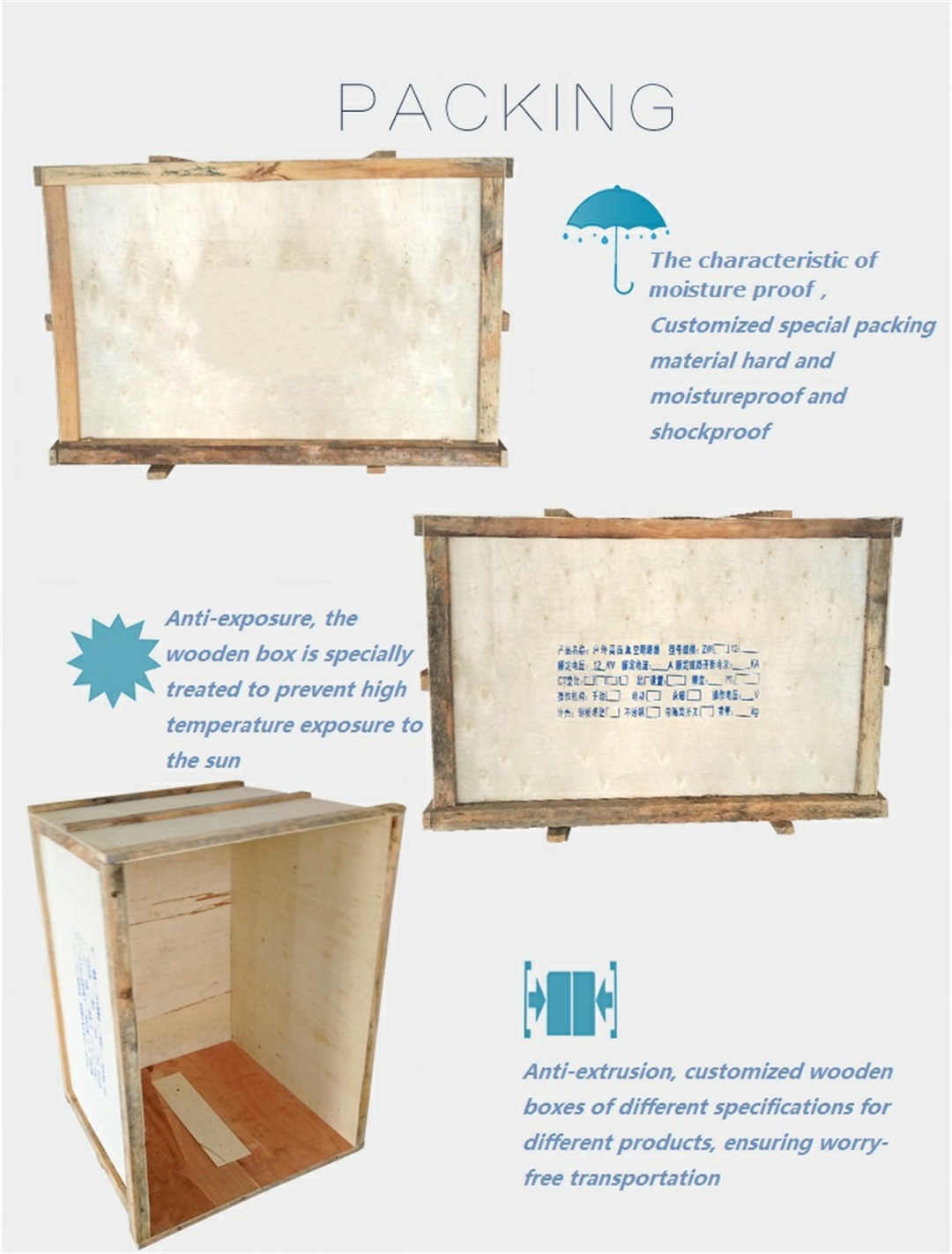
Product application case














